Rosemary: types, care, application and growing from seeds
Rosemary is an evergreen perennial shrub that grows primarily in warm climates. It belongs to the labiate family. Its branches can reach 1.5 meters in height. The roots are strong, branching, going into the ground to a depth of 4 meters. The leaves are thin, in appearance they resemble small needles, but they have nothing to do with conifers. They are densely located on the dense branches of the bush. The flowering period of rosemary lasts all warm months. Flowers are collected in inflorescences and are colored blue, purple, pink or white in different varieties and species.
Content:
- Types of rosemary
- Rosemary care
- Growing rosemary from seeds
- Medicinal properties and uses of rosemary
Types of rosemary
Medicinal rosemary:
- Densely branching perennial shrub, some varieties of which grow up to 2 meters.
- The leaves are thin, latent, short, painted green on top, white and dull on the underside.
- If you rub them, you can smell a pleasant smell. Flowers are white, pink and purple in different varieties.
- It is used in medicines, cosmetology and cooking. Sorts Tenderness, Dewdrop, Doctor.
Rosemary open:
- This is a short bush, its maximum size is 50 cm, however, its numerous branches spread over 1.5 meters in width.
- The leaves are leathery, matte green, needle-shaped and slightly curved down the sides. Rosemary blooms with blue flowers that appear in the axils of the leaves. Used in cooking and cosmetology.
- Spread rosemary varieties: creeping, corsican and lavender.
Rosemary care
Rosemary is a thermophilic plant and grows mainly in the southern regions, so care for it should be appropriate. This takes into account the maintenance of the required temperature and moisture, as well as the warming of the plant for the winter.
Watering rosemary:
- Since rosemary is a moisture-loving plant, it should be watered regularly, especially during the hot summer months. However, overflow and stagnation of water can negatively affect the health of the plant.
- Drying out of the soil also leads to negative consequences.
- To avoid such shortcomings, it is necessary to water the bush when the topsoil has dried to a depth of 3-5 cm. M
- Older plants and recently transplanted plants require more moisture, so watering them is more intensive.
Rosemary prefers moist air and should be sprayed regularly. If for the winter period the plant is transferred to a house or apartment where there is heating, it is necessary to moisten the plant several times a day.
It is not necessary to set the temperature regime, the main thing to remember is that the temperature should not drop to -10 degrees. Therefore, if a rosemary bush grows in a region where such a temperature is normal in winter, then the bush is transplanted into a tub and transferred to a warm place. If the temperature drops to -3 degrees, the bush must be insulated for the winter.
Each year, during the growing period, rosemary is fed 1-2 times a month. For this, organic or mineral fertilizers are suitable.
Rosemary resistant to diseases and pests... But sometimes you can see a mite cobweb, which can be easily removed with ordinary soapy water. Also, this plant is prone to powdery mildew... This disease appears with an excess of moisture. You can fight this ailment with the help of special preparations that are sold in shops for garden lovers. But such a plant should not be used for food. It is necessary to wait for new young shoots that have not been processed.
Growing rosemary from seeds
Propagation of rosemary is carried out using cuttings or seeds.
When grafting, the process is carried out in the middle of summer. At the end of June, it is necessary to cut off cuttings from adult mother bush... For this, young shoots are well suited, the height of which should be about 8 cm and on each such branch there should be 4–5 internodes. Cut cuttings are buried in the ground with the lower part by 5 cm. Each such shoot is planted at a distance of at least 10 cm. Reproduction by cuttings is the most profitable process, since the rooting percentage is high.
The second way to propagate rosemary is by growing from seed. This is more difficult than grafting, however, it develops and grows just as quickly.
Growing rosemary with seeds:
- Before sowing the seeds need to be soakedby wrapping them in a damp cloth and keeping them there for a while, constantly moisturizing. This process should be started in late winter or early spring, as soaked seeds can hatch within 3-4 weeks.
- After small "spouts" of sprouts appear on the seeds, they can be planted in a prepared container with soil. To do this, the seeds are carefully laid out on the soil and sprinkled with loose soil on top with a layer of 0.5 cm.
- Trampling or deepening of the seeds will result in no sprouts, and they will not break through the soil.
- Next, you need to make a greenhouse using a film, in which you first make small holes for ventilation.
- Watering such seedlings should be done regularly with a spray bottle.
- The twigs that have grown from the seeds must be planted in boxes for growing and after a while, when they finally get stronger, in pots.
- If planted in open ground from boxes, then you should wait for sunny warm weather so that the soil is sufficiently warmed up.
- Young rosemary is planted at a distance of 0.5 meters.
To plant an adult plant, it is necessary to choose a bright place on the site, a small shadow is also allowed. The soil should be loose, not clayey, with good drainage. In one place, the bush can grow up to 15 years, after which it will be necessary to transplant it, or fertilize the soil around it well.
Medicinal properties and uses of rosemary
Rosemary oil, which is used in various fields of medicine and cosmetology. Dermatologists use it for acne and eczema. Also, rosemary oil eliminates puffiness, helps with arthritis and osteochondrosis, prevents the occurrence of vegetative-vascular distortion.
As a cosmetic product, rosemary oil normalizes the condition of oily skin, perfectly heals wounds and smoothes scars and scars.
Oil is used in aroma lamps, it is part of medical compresses and baths. Massage therapists also use this remedy for procedures. In cosmetology, it is added to creams, shampoos, masks.
Rosemary is often used in cooking, but you should be careful with it. With a large amount of this spice, you can get a coniferous juniper flavor, since the oil content even in dried rosemary is extremely high. Rosemary leaves and flowers are used as spices, collected during flowering and falling of fruits. Raw materials must be collected in sunny weather, after which they are dried and stored. When thermally processed, rosemary does not lose its qualities, so it is often used when cooking fish and meat. Also, this seasoning is great for various marinades and pickles.
The bush itself is often used as an ornamental plant.
Lush and bushy, evergreen and emitting pleasant fresh aroma, it is popular with landscape designers. Beautiful hedges grow out of it, which can be shaped into various bizarre shapes.
More information can be found in the video.



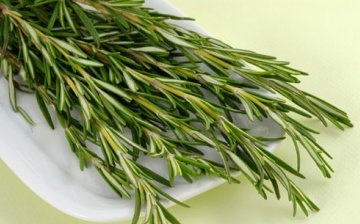
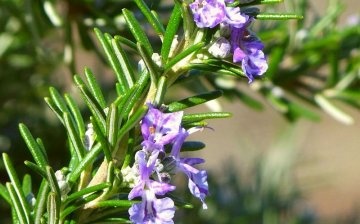

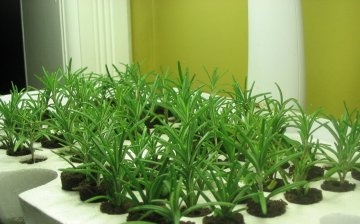
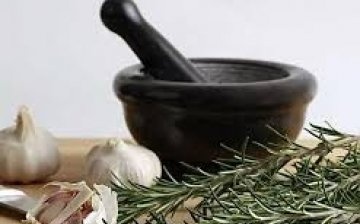





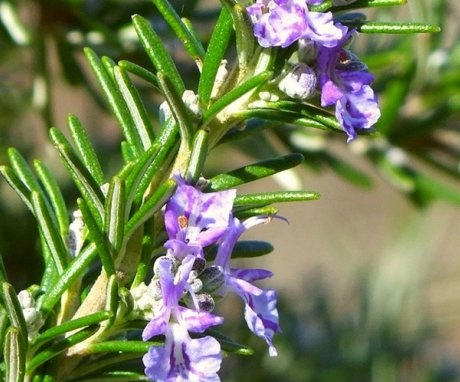
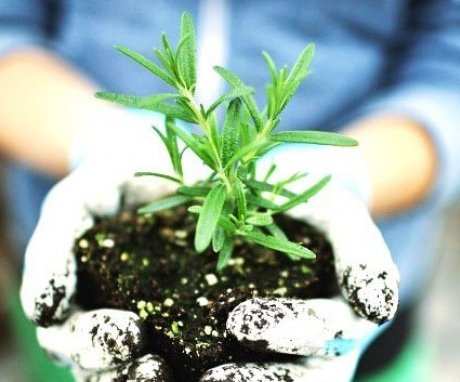
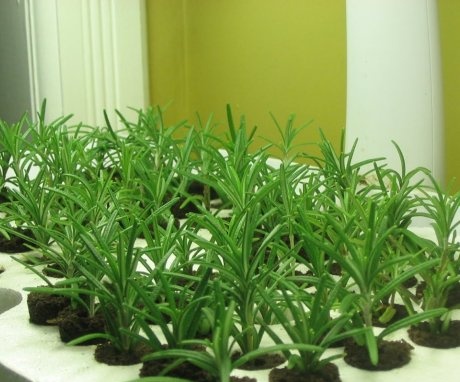
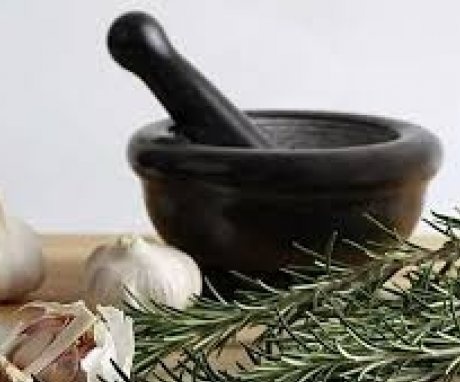
excellent, aromatic herb. I believe that such greenery must be present on the site.